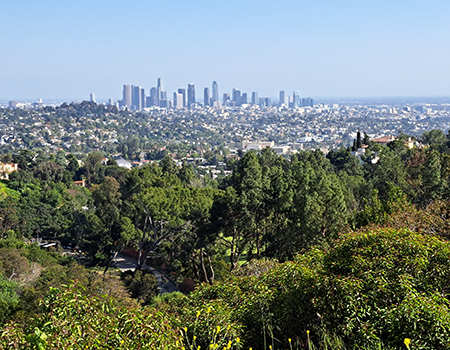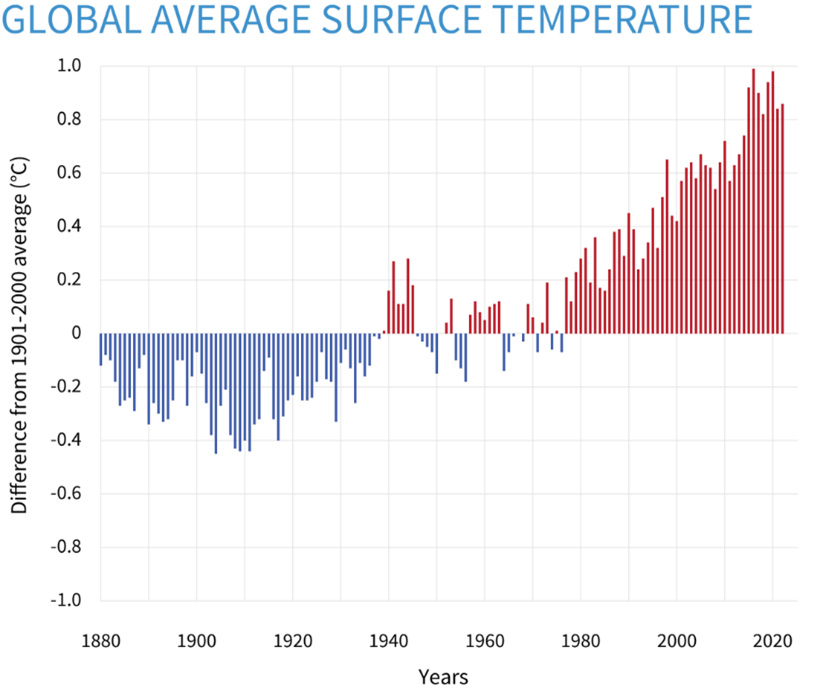
Los Angeles, one of many urban forests in California, as viewed from Griffith Park. (Photo courtesy of Francisco Escobedo)
Andrew Avitt
Pacific Southwest Region
August 7, 2023
Editor’s note: The Forest Service recently announced $1B in available grant funding for the development of urban and community forests across the country. This support will enable communities to plant and maintain thriving urban forests.
Globally, the past eight years were the warmest on record. It’s a trend more noticeable in larger cities, where forest floors and lush green canopies have been replaced by pavement and roofing.
Finding the balance of how urban and natural areas can comingle has never been more important. We talked with Dr. Francisco Escobedo a research social scientist with the Forest Service’s Pacific Southwest Research Station. He outlines some of the many benefits of urban forests and green spaces and how creating and caring for urban forests can result in cooler, more prosperous cities.
“About 55% of people in the world live in cities. When you look at cities here in the U.S. and states like California, it’s over 80%,” said Dr. Escobedo. “A lot of what I do as a researcher is measure the influence of trees and vegetation in and near cities, what impact it has on people and on society.”
The Cooling Effects of Trees
“Probably the most acute and relevant benefit right now is the cooling effects of trees,” said Dr. Escobedo. “Heat and heat-related illness is a big and ever-increasing concern here in California. Trees help reduce temperature and do it well.”
Trees provide a cooling effect in two ways. The most obvious is the shade they provide. They block the sun from heating up pavement and buildings. And with increased shade, that means cooler houses and lower energy bills.
“We often say if you plant the right tree in the right place for the right reason, those trees, those leaves block the sun from hitting buildings or your house. Which means your house is cooler. If your house is cooler, you use less air conditioning. Less air conditioning, less energy.”
But there’s also a less obvious, invisible process taking place that cools the surrounding air. Trees convert water to gas which transpires from their leaves. This process, called evapotranspiration, and the shade that trees provide is being studied as one way to help reduce the increasing temperatures in urban areas which disproportionately affect vulnerable communities.
The Wellness and Economic Benefits of Thriving Urban Forests

With over a century of data from 1880–2022, this graph from the National Oceanic and Atmospheric Administration (NOAA) shows how yearly surface temperatures compare to 20th-century averages. Blue bars indicate cooler-than-average years; red bars show warmer-than-average years.
Dr. Escobedo has been involved in the field of the environment land management for the last 30 years. He has worked as a wildland firefighter, a forest soil scientist, studied hydrology and environmental policy and taught in universities. His passion for helping people would eventually lead him to urban forestry.
“If we want to help people, then there’s no better place to focus than around communities, cities and towns. That’s the perfect place to be,” said Escobedo. “Human health and a healthy environment are interrelated.”
Dr. Escobedo has explored how trees may serve as a purifier absorbing pollutants and carbon in the air. This benefit can be measured by the growth rates of the trees and modeling the particulate matter deposited on leaf surfaces.
The Forest Service’s Climate Change Resource Center backs up how effective trees are as air purifiers — “In the contiguous United States alone, urban trees store over 708 million tons of carbon (approximately 12.6% of annual carbon dioxide emissions in the United States) and capture an additional 28.2 million tons of carbon (approximately 0.05% of annual emissions) per year.”
There are other subtle benefits to societies underway in urban forests. Studies in Philadelphia show green spaces in urban areas can reduce depression and crime. Urban forests and green spaces also support local economies.
“People like going into shopping districts that are cool and leafy, especially in areas like Southern California,” said Dr. Escobedo. “Green spaces have also shown to increase property values.”
The newly announced Urban & Community Forestry Inflation Reduction Act Grants from the Forest Service aims to directly support all these benefits.
Although it may seem simple, trees are good, urban forestry needs to take into account what individuals and the community want and need. “Every urban forest in every part of the world has its needs, has its realities,” said Dr. Escobedo.
“As an agency, we have a unique supporting role, educating people on where and why to plant trees, how to care for and maintain them, and can help communities and organizations with funding.”
The $1 billion in grants supported by the 2022 Inflation Reduction Act are now available to communities and organizations. Find more information on the Forest Service’s Urban Committee Forestry Program website.